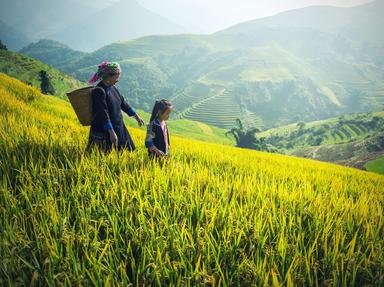Quiz Answer Key and Fun Facts
1. The nickname 'Land of a Million Elephants' comes from Laotian history and dates back to the 14th century AD. Although the name was most likely hyperbole, what significance did it hold? (Think Hannibal)
2. The Laotian capital, Vientiane, is located on which river, that is the 12th longest river in the world and whose delta played a major role in the Vietnam War?
3. Laos has five countries with whom it shares a border, of the four listed below which is NOT one of them?
4. The proxy war fought by the CIA in Laos during the Vietnam War era had little effect on the country then and there were no long lasting effects after the war ended.
5. The official name of Laos is The Lao People's Democratic Republic. With this name in mind, what kind of government does Laos have?
6. Although the main organized religion of Laos is Theravada Buddhism, what belief, defined as "a doctrine that the vital principle of organic development is immaterial spirit" by Merriam-Webster.com, also plays a major role?
7. Laos borders which body of water?
8. The Plain of Jars in 'rocky' north central Laos is considered by many archeologists and historians to be one of the most important sites for gaining an understanding of prehistoric Southeast Asia. What material are the jars mainly constructed from?
9. The stupa of Pha That Luang in the capital of Vientiane is considered to be the national symbol of Laos. What is a stupa?
10. In the late 19th century the Chinese Black Flag Army invaded Laos. Which European country came to the rescue of Laos and made it a protectorate?
Source: Author
tazman6619
This quiz was reviewed by FunTrivia editor
spanishliz before going online.
Any errors found in FunTrivia content are routinely corrected through our feedback system.

